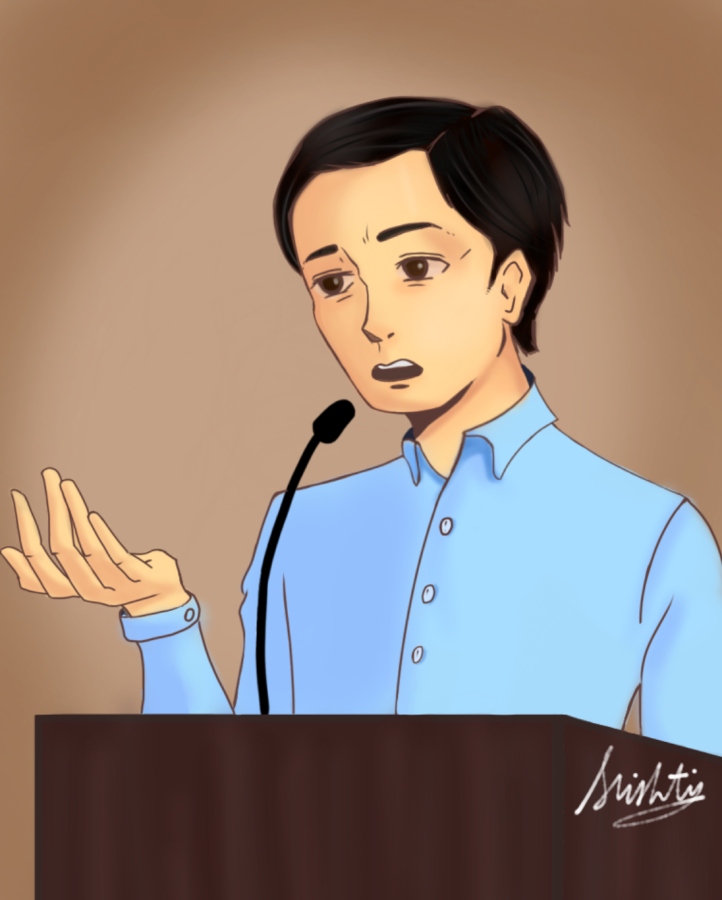The He Jiankui Controversy
November 29, 2022
*The mentioned scientist’s surname is He. In order to ensure that there won’t be any confusion between the pronoun ‘he’ and his surname, we capitalized ‘He’ every time the scientist’s name was referred to.
On the 26th of November, 2018, Chinese scientist He Jiankui, then 34, permanently altered the world of science. He announced that he had genetically modified two babies – twins – whom he named Lula and Nana. Many viewed this as a huge scientific breakthrough, but the results of the investigations into the procedures behind the experiment caused it to become a widely controversial topic.
He’s experiment involved a technique known as CRISPR (Clustered Regularly Interspaced Short Palindromic Repeats) [1].
CRISPR (also known as CRISPR-Cas9) mimics a natural bacterial process in which bacteria will attach RNA to invading viruses and use enzymes such as Cas9 to cut and disable them. Using an RNA “guide” (which is attached to the RNA and binds itself to a cell’s specific DNA), scientists can cut DNA with Cas9 and modify it, either by replacing it with a new DNA segment or altering genetic material. This way, genetic disorders such as cystic fibrosis can be prevented, and immunity to diseases (e.g. HIV) can be given [2]. It was because of this that CRISPR was first popularized, as it enabled scientists to edit genes with more efficiency and speed while also being cheaper than other methods [2].
Using CRISPR technology, He and two collaborators, Zhang Renli and Qin Jinzhou, attempted to give two human embryos immunity to HIV. A couple consented for these two embryos to be used for the experiment. The father of these embryos had HIV, while the mother did not. HIV can be transmitted from parent to child; He was also trying to eliminate the threat of the embryos developing HIV from their father [1].
However, he did not fully succeed. In crippling CCR5, which is the gene for the main protein that HIV uses to infect cells, he also made some “off-target” changes to other parts of Lulu and Nana’s genetic constructs [3]. These could potentially lead to adverse side effects and mutations in their genetics, [2] such as cancer [3].
He posted five YouTube videos announcing his experiment on November 26th, 2018. At first, he was met with admiration and his results were seen as very successful.
Following further analysis, though, many scientists criticized his boldness and lack of caution (i.e. there were many risks in his experiment left unaccounted for). The night after He’s videos were released, 122 Chinese scientists gathered to write a paper that highlighted the flaws in his experiment, even describing his tactics as “crazy” [4].
In contrast to its initial response, the majority of the public then viewed He’s experiment as reckless and an unnatural overstep in science, especially because it was noted that human genome editing can permanently change the human gene pool for the generations to come. For example, in a tweet that received over 1,000 likes, Dr. Tabak, the certified director of NIH (National Institutes of Health), wrote that his work was “profoundly disturbing and trample[d] on ethical norms” [5].
He Jiankui was ultimately sentenced to three years in prison and was given a three-million-yuan fine on December 30th, 2019, over a year after his initial experiment. He was fired from his job at SUStech and had his license as a scientist removed. His partners were also given similar, albeit less severe, penalties. He was released recently in April 2022 [6].
Following his arrest, China introduced several regulations about human genome editing; modifications to the laws surrounding it are still being made today.
Although he has not made a public return to the world of science and still faces wide-spread scorn, He’s experiment raised a myriad of important ethical questions in regard to genome editing, many of which are yet to be answered.
Sources:
[1]https://ghrp.biomedcentral.com/articles/10.1186/s41256-020-00153-4
[2]https://medlineplus.gov/genetics/understanding/genomicresearch/genomeediting/
[3]https://www.science.org/content/article/did-crispr-help-or-harm-first-ever-gene-edited-babies
[4]https://www.ncbi.nlm.nih.gov/pmc/articles/PMC6331330/
[5] https://twitter.com/nihdirector/status/1067809726489141253?lang=en
[6]https://www.technologyreview.com/2022/04/04/1048829/he-jiankui-prison-free-crispr-babies/amp/

